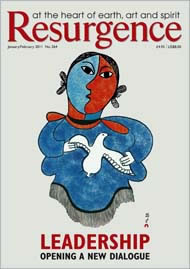It is a curious fact that anyone interested in exploring the vital subjects of peace and nonviolence, peaceful conflict resolution, peacemakers and peacemaking did not have any reference works to consult until relatively recently. The contrast in this respect with war and military history could not be greater. Yet the concepts of peace and nonviolence – as well as the numerous individuals, movements, campaigns and associated institutions – have a long and rich history.
It is largely thanks to the development and institutionalisation of peace research, peace studies and conflict resolution in the 1980s that, at last, such basic reference works as biographical dictionaries and encyclopedias have emerged in this important field of human inquiry and activity.
The World Encyclopedia of Peace, published in four volumes in 1986, was the first work of its kind. Following the end of the cold war, a revised and expanded edition appeared in 1999, when the three-volume Encyclopedia of Violence, Peace, and Conflict was also published.
Now readers and researchers have a third peace encyclopedia available. The fact that it is published by Oxford University Press is not insignificant: it is one more indication that the study and pursuit of peace are at last seen as credible and indeed necessary endeavours at the start of a new century that has witnessed catastrophic wars and instances of large-scale social violence, fuelled by rising arms expenditure and a buoyant global trade in arms.
At the same time, there is widespread poverty, not only in the global South but also in the rich countries of the North, making ‘disarmament for development’ an imperative for bringing about a safer, fairer and more peaceful world. The Oxford International Encyclopedia of Peace is an invaluable and stimulating reference for anyone concerned about these interrelated issues. Editor-in-chief Nigel Young was well-placed to oversee this ambitious project: an academic equally at home in sociology, political science and history, he was among the founding faculty of the Department of Peace Studies at the University of Bradford in the early 1970s, and subsequently was director of the Peace Studies programme at Colgate University in New York. Importantly, he has been not only a keen student of international movements for social change but also an active participant in many of them (on both sides of the Atlantic). This combination of scholarship and social engagement is reflected in the choice of entries and in the number and diversity of expert contributors.
The encyclopedia contains some 850 entries, arranged in alphabetical order of keyword. They are of varying length, depending on the importance of the topic; several entries have sub-divisions, with different authors. The approximately 530 authors hail from all corners of the world, although the great majority are from North America and Western Europe – despite special efforts made to attract contributors from the South. Each entry is accompanied by a concise bibliography, as well as a list of references to related entries.
As one might expect from such a reputable publisher, the work is beautifully presented, in four sturdy volumes of about 700 pages each. The first volume contains a helpful chronology of significant events concerning peace in history, from 1258 BCE to the present; the last volume reprints the texts of some 40 key documents referred to in the encyclopedia. There is also a detailed index.
The work opens with a substantial, thoughtful and complimentary foreword by the Dalai Lama. Regrettably, given Chinese sensitivities, this will make it difficult for the growing community of peace and conflict resolution researchers as well as activists in China to consult the work. It is followed by a most interesting and valuable introduction by the editor that places the Encyclopedia in the tradition of the great Enlightenment project of the philosophes, the Encyclopédie of Diderot and D’Alembert, publication of which started in 1751. Although French authorities had officially banned the project (in order to appease its religious and other conservative critics), they did not obstruct its further publication.
It remains to be seen whether authorities in China will be equally pragmatic. Young points out that, most unusually but in accordance with the new thinking that the work represented and wanted to stimulate, the Encyclopédie has an entry on ‘peace’.
The belief that war is not inevitable but a human construction and that the rational and unarmed resolution of conflicts is both possible and desirable still needs to be argued and heard, especially in an age threatened by weapons of mass destruction. The Oxford International Encyclopedia of Peace is a major contribution to disseminating this vital message.







